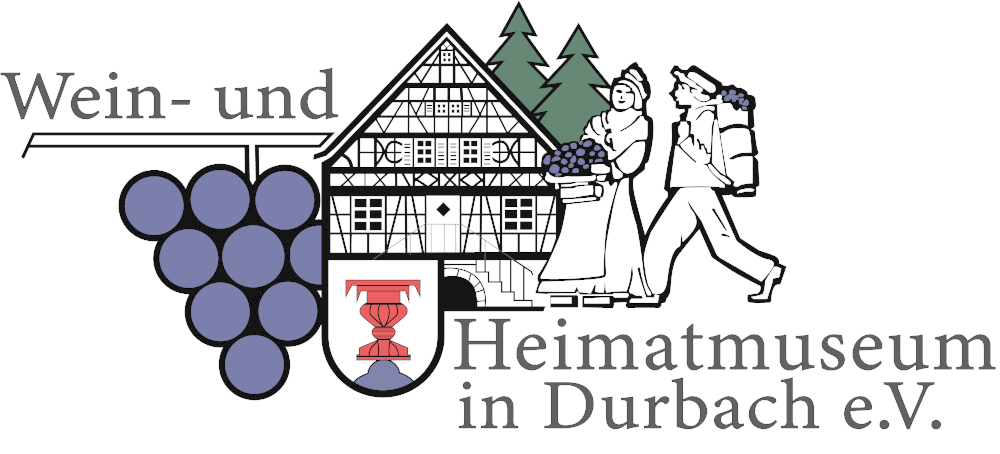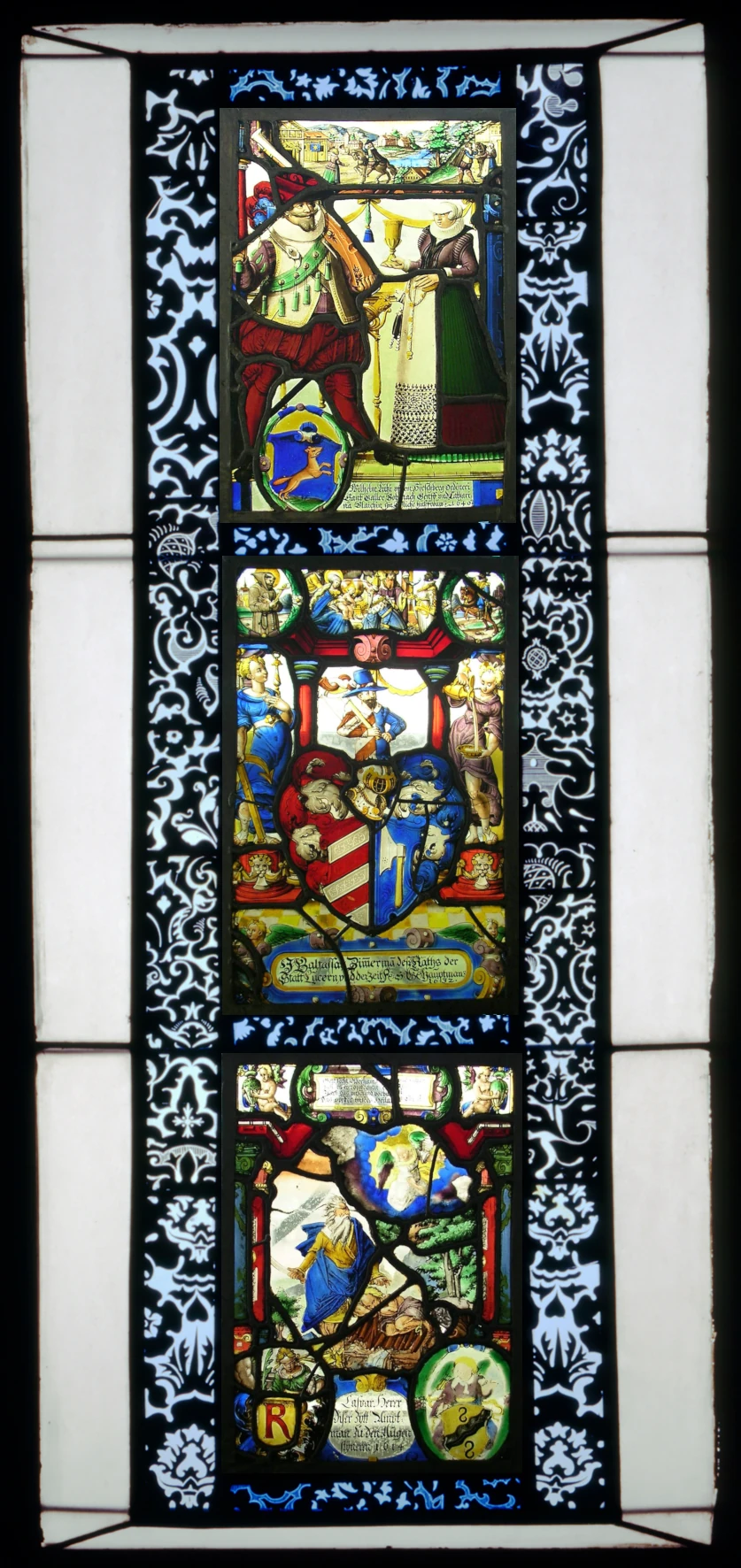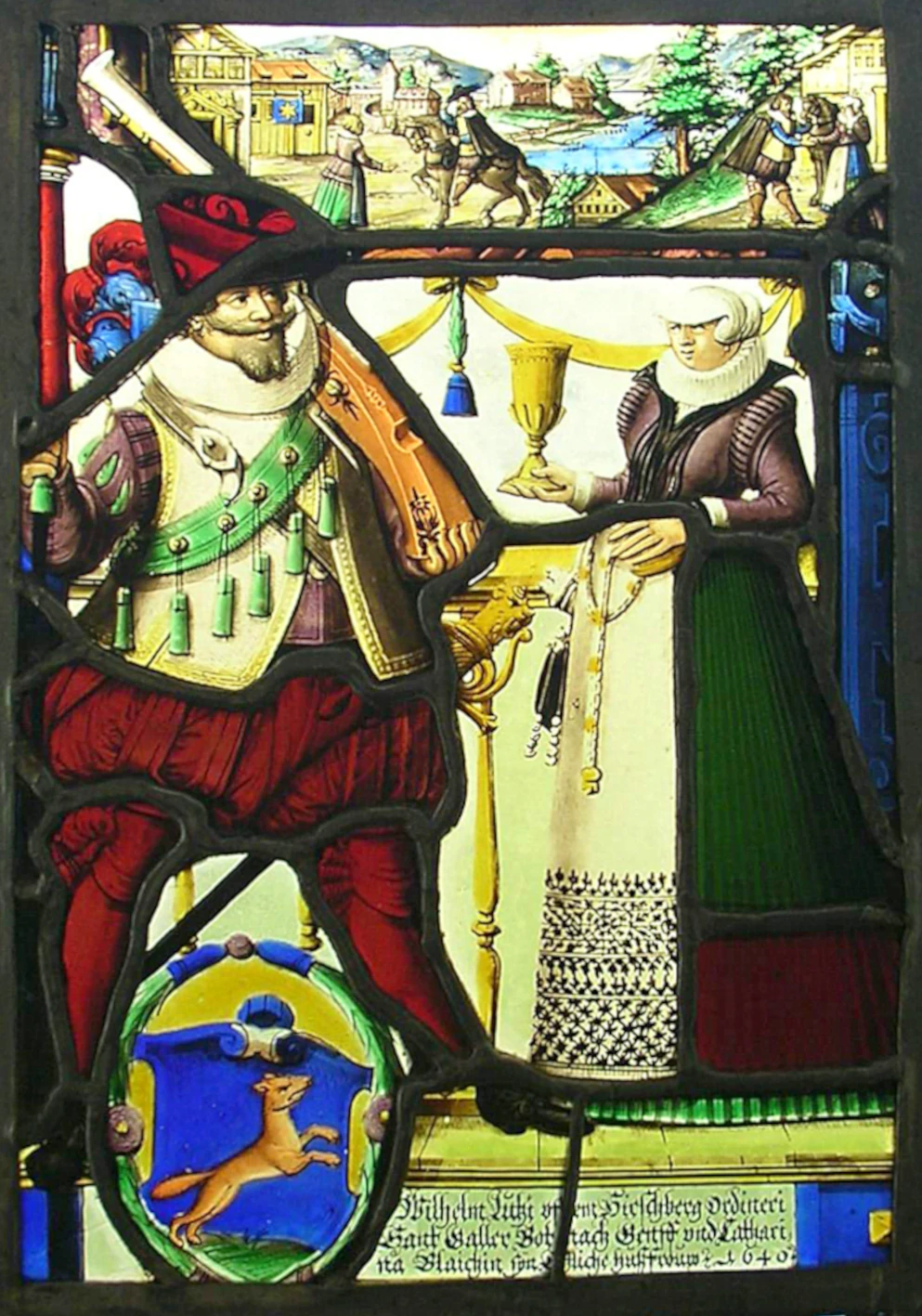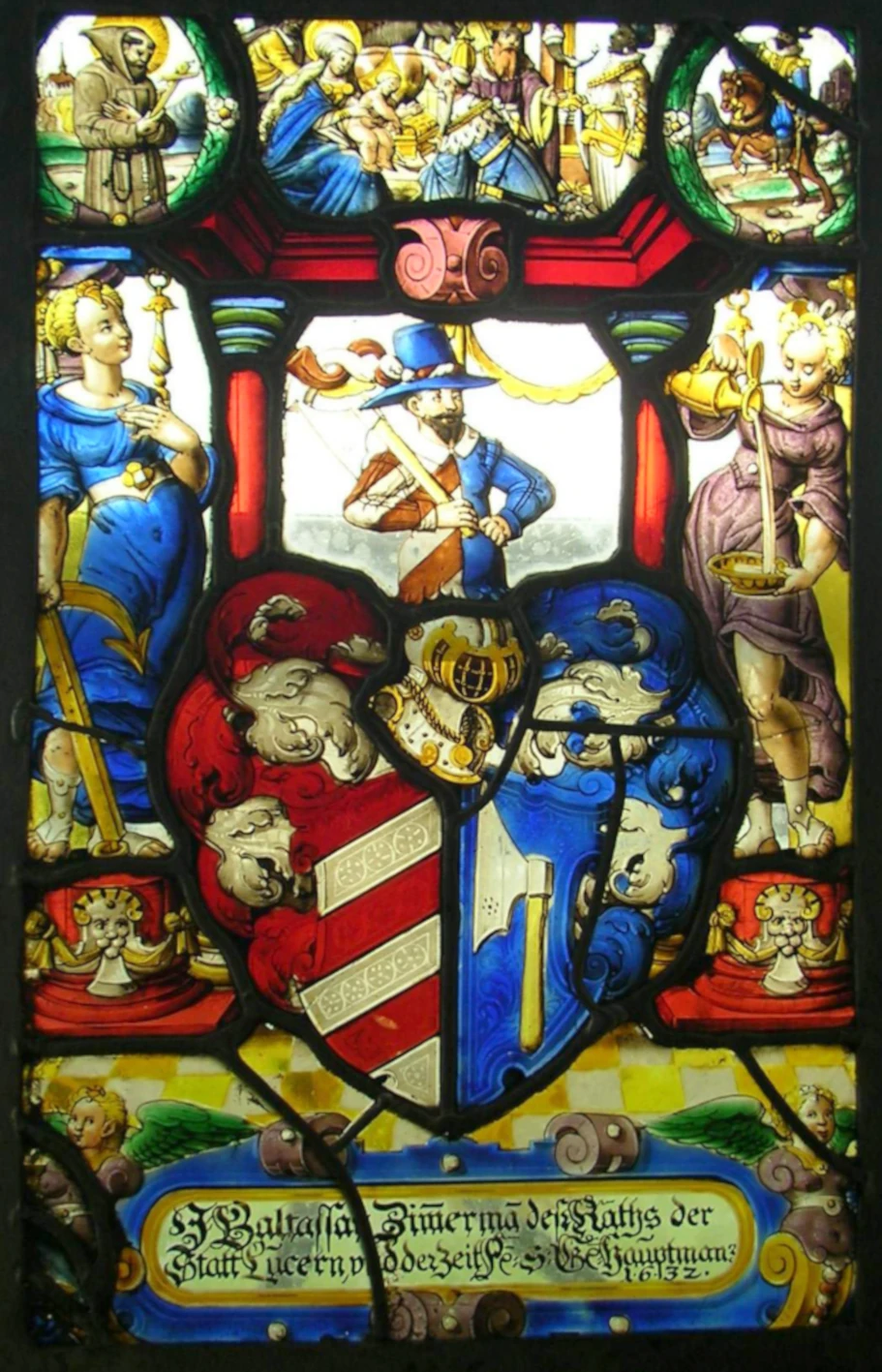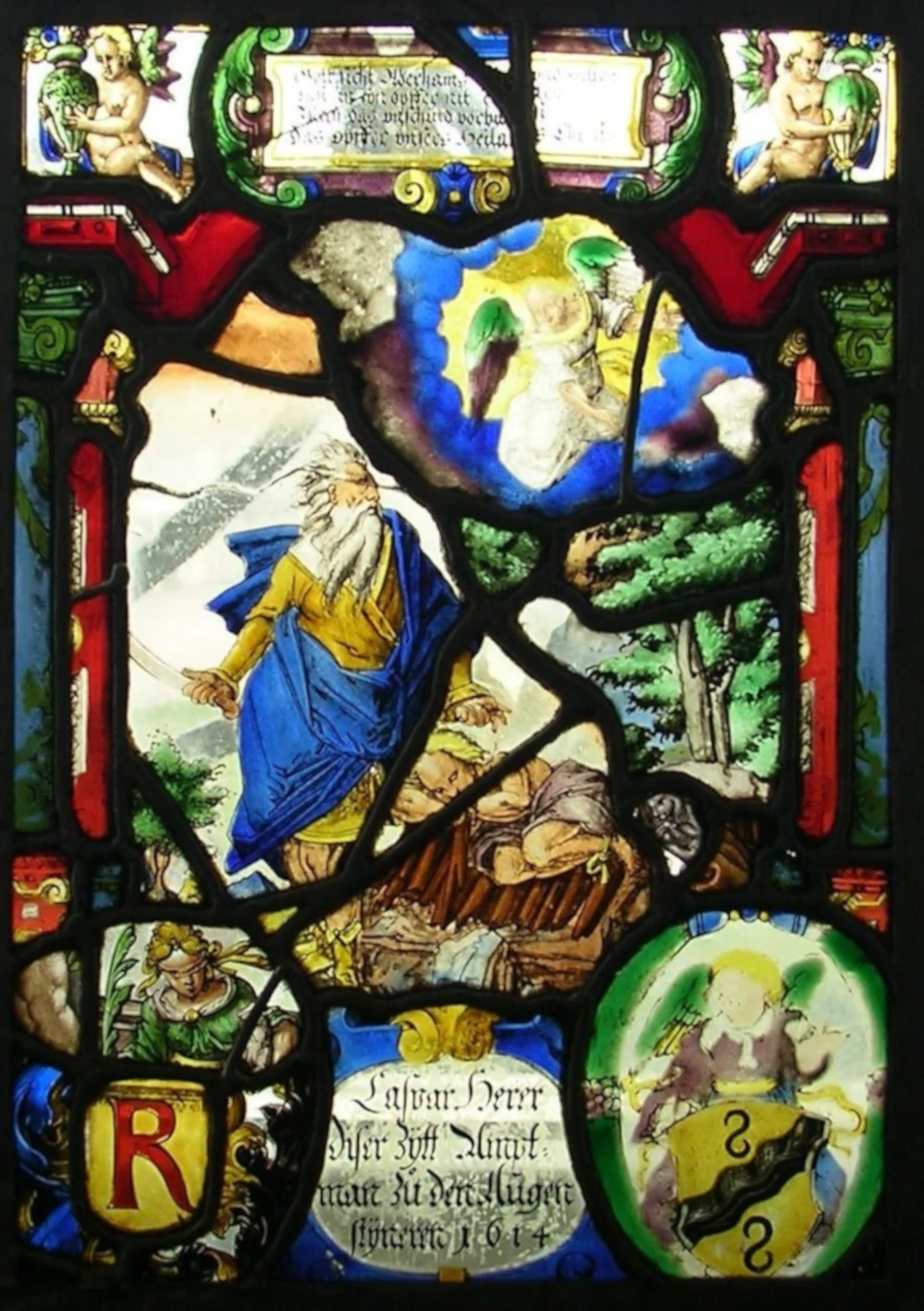266 Staufenberg Castle Window 6
Motif above: Wilhelm Lutzi, St. Gallen messenger to Geneva, with his wife in 16th century costume; coat of arms: Leaping fox; headpiece: Farewell and homecoming; Inscription: “Wilhelm Lutzi uffem Hirschberg OrdineriSant Galler Bot nach Genff und Catharina Blaichin syn E..liche hußfrouw 1640″
Motif centre: Balthassar Zimmermann belonged to the “Zimmermann” family of Lucerne, who were able to send members to the city’s Small Council in the first half of the 17th century. From 1618 until his death in 1641, he was a member of the Grand Council of the city of Lucerne. Headpiece: Adoration of the three kings, next to them St. Francis and a horseman in period costume. Inscription: “J. Baltassar Zimmermann des Raths der Instead of Lucern and the time Fe s Ge Hauptmann. 1632″
Motif below:Abraham’s sacrifice under early Renaissance architecture. Justice” with veiled eyes holds a shield with the letter R., an angel holds the coat of arms shield with a black stream slanting to the left and a hook in a yellow field. Headpiece: Putti and the biblical inscription on the sacrifice of Isaac. Inscription at the top: “God sees Abraham’s ….. and will – Burden in syn opffer nit e… llen – Isaac the model of innocence .st – The sacrifice of our Savior Christ.”; Inscription at the bottom: “Caspar Herer – this Zytt Ampt – man to the eyes – styneren 1614″
Motif above: A bearded man in the puffy costume of the second half of the 16th century with a rifle over his shoulder, the woman with a goblet in her right hand.
According to research in the St. Gallen city archives, “Ordinari messengers” only travelled as far as Geneva from 1669 onwards; before that, they had all travelled as far as Lyon. The name “Lutz” and the surname “uffem Hirschberg” could not be assigned to any St. Gallen family either. It can therefore be assumed that this is a “Fürstäbtischen” messenger.
The “Hirschberg” is the second-highest mountain peak in the Hirschberg mountain range, the highest point of which is 1174 metres above sea level. It is located in the border area between the cantons of Appenzell Ausserrhoden and Appenzell Innerrhoden in the Swiss Pre-Alps.
The headpiece of the disc shows the messenger’s departure and return home. The leaping fox in the lower part of the disc could not be assigned to a specific coat of arms.
Motif centre: Zimmermann’s main activities were evidently soldiering, travelling as an officer in foreign services – demonstrably in Spanish-Milanese service. The disc shows him flanked by handsome figures of virtue.
The coat of arms: shield, split, left side diagonally left red and silver striped, on the right side an axe in blue. At the top of the coat of arms is a carpenter with an axe over his left shoulder. The coat of arms can be seen in the cloister of the Franciscan monastery of Werthenstein (canton of Lucerne) and also on the Chapel Bridge in the city of Lucerne.
Motif below: Unfortunately, the right-hand corner of the very beautiful main picture, which still goes back to Holbein’s tradition, is heavily patched; the framing and crowning with the putti are to be attributed to an earlier period than the year 1614. The disc measures 30 x 20 cm and is made up of two different discs.

